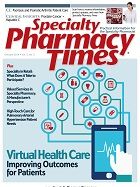Publication
Article
Specialty Pharmacy Times
Hepatitis C Could Become Rare Disease by 2036
An influx of new, highly effective therapies combined with more effective screening guidelines could make hepatitis C a rare disease by 2036, according to a study published August 5, 2014, in the Annals of Internal Medicine.
The study credited guidelines passed in 2012 by the Centers for Disease Control and Prevention and the US Preventive Services Task Force recommending that anyone born between 1945 and 1965 receive a onetime screening for hepatitis C virus (HCV) infection, which is frequently asymptomatic. That age group represents 81% of chronically infected HCV patients.
Additionally, oral HCV drug regimens introduced earlier this year were found to be highly effective in reducing the viral load to near-undetectable levels in the blood of HCV patients.
In a predictive model developed by the University of Pittsburgh Graduate School of Public Health, researchers projected the number of HCV infections in the United States from 2001 to 2050, utilizing various potential scenarios for future treatment, while incorporating infection status awareness, stage of disease, treatment history, and continued drug development. Under that model, the number of projected HCV cases dropped to less than 1 in every 1500 people, which is the threshold for rare disease designation.
According to a predictive model featuring universal HCV screening for all US citizens, approximately 1 million cases could be identified over the next decade, which would make HCV a rare disease by 2026.
The combined impact of universal screening and new drug therapies could potentially reduce liver disease—related deaths by 161,500 and liver transplants by 13,900 from 2014 to 2050, the researchers wrote. SPT

Newsletter
Stay informed on drug updates, treatment guidelines, and pharmacy practice trends—subscribe to Pharmacy Times for weekly clinical insights.





